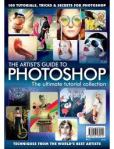I’m not sure on whether this summer was really long-or really short… I’ve kept myself busy tearing through books, taking notes, doodling, playing around in photoshop and discovering my own personal design process. But the results are several unfinished projects and a sense of anxiety that there’s still so much that I need to learn. It’s been several weeks since I last posted and the imaginary teacher in my head is displeased. In my last post I had just gotten the book, Photoshop CS5: The Missing Manual and I have since read through it cover to cover.
 This book did a really great job of thoroughly covering photoshops extensive capabilities in a well-organized and easy to digest linear manner that allows readers to see why photoshop is the ultimate tool for image making and tweaking and how they can utilize it to enhance their own projects. And even though it wasn’t terribly inspiring it is already serving me well as my photoshop reference source and even more so after I put together notes that I took in order to describe the lessons in my own words and included
This book did a really great job of thoroughly covering photoshops extensive capabilities in a well-organized and easy to digest linear manner that allows readers to see why photoshop is the ultimate tool for image making and tweaking and how they can utilize it to enhance their own projects. And even though it wasn’t terribly inspiring it is already serving me well as my photoshop reference source and even more so after I put together notes that I took in order to describe the lessons in my own words and included  thumbnail images for those harder to grasp concepts (PsMissingManual Notes). To continue engaging and advancing my photoshop skills I subscribe to 365Psd for free photoshop files to examine and got “The Artists Guide to Photoshop” for master-level creative tutorials.
thumbnail images for those harder to grasp concepts (PsMissingManual Notes). To continue engaging and advancing my photoshop skills I subscribe to 365Psd for free photoshop files to examine and got “The Artists Guide to Photoshop” for master-level creative tutorials.
 I was also working on learning Drupal 7 in my last post and purchased “Drupal 7 Themes” in order to build Drupal-based CMS sites from scratch but it turned out that that books section on custom theming wasn’t as comprehensive as it should’ve been. With only 2 pages on customizing and creating new regions in the .tpl.php files I am formally retracting my previous recommendation. Fortunately, I soon discovered “The Definitive Guide To Drupal 7” which, amongst almost every other facet of Drupal 7, exhaustively covered the topic of customizing and building a site from scratch including discussing Default Regions, Hidden Regions, Module-Specific Regions, when to use regions vs. hard-coding variables, and then walks you through 2 distinct examples of implementing a new region (p.291-292). As well as clear explanations and examples on implementing template overrides, theme functions, theme hook suggestions, pre/process functions, and the render api’s alter hooks. My only issue with the book is that it doesn’t have a dedicated section that concludes its fantastic coverage of the individual theming techniques by providing an all-inclusive comparative analysis or custom site build that demonstrates the logic of using one theming technique over another throughout the site build process (similar to how css management strategies were summarized in ch. 16 pages 347-348).
I was also working on learning Drupal 7 in my last post and purchased “Drupal 7 Themes” in order to build Drupal-based CMS sites from scratch but it turned out that that books section on custom theming wasn’t as comprehensive as it should’ve been. With only 2 pages on customizing and creating new regions in the .tpl.php files I am formally retracting my previous recommendation. Fortunately, I soon discovered “The Definitive Guide To Drupal 7” which, amongst almost every other facet of Drupal 7, exhaustively covered the topic of customizing and building a site from scratch including discussing Default Regions, Hidden Regions, Module-Specific Regions, when to use regions vs. hard-coding variables, and then walks you through 2 distinct examples of implementing a new region (p.291-292). As well as clear explanations and examples on implementing template overrides, theme functions, theme hook suggestions, pre/process functions, and the render api’s alter hooks. My only issue with the book is that it doesn’t have a dedicated section that concludes its fantastic coverage of the individual theming techniques by providing an all-inclusive comparative analysis or custom site build that demonstrates the logic of using one theming technique over another throughout the site build process (similar to how css management strategies were summarized in ch. 16 pages 347-348).
Since I’ve decided to separate my postings on the technical and theoretical sides of my graphic design studies I’ll create my other post in the next few days to talk about the other more design-oriented books that I have read, what I have learned from them as well as my newly gleaned incites into my creative process and hopefully have a few more of my projects to showcase along with those that I have yet to post.



